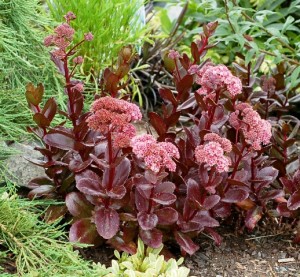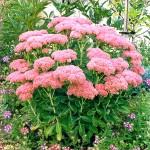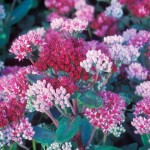Fall Sedums
Fall Sedums
Succulents have become all the rage recently and sedums are king when it comes to succulents. Sedums are commonly called stonecrops because many of the sedum species are found in the wild growing on rocky or stony ledges.These fleshy leaved beauties are one of the easiest to grow perennials in the garden. And if you choose your varieties carefully your sedums will bloom from early summer to late fall.
Most sedums are low growing and spring or summer blooming, but the Autumn Sedums bloom in the late summer and fall. They tend to be more upright in habit and taller growing in general. Some bloom in late September and October along with your fall mums, putting a nice exclamation point on the growing season.
 ‘Chocolate Drop’ is a mounding stonecrop that typically grows to 12″ tall and 20″ wide. The scalloped, chocolate brown leaves are attractive throughout the growing season. Pink flowers appear in July and August, contrasting nicely with the darker foliage. U.S. Plant Patent Applied For (PPAF).
‘Chocolate Drop’ is a mounding stonecrop that typically grows to 12″ tall and 20″ wide. The scalloped, chocolate brown leaves are attractive throughout the growing season. Pink flowers appear in July and August, contrasting nicely with the darker foliage. U.S. Plant Patent Applied For (PPAF).Autumn Joy Sedum is probably the most popular of all the fall stonecrops. It is as dependable as they come.

Sedum Autumn Joy
Blooming from late August through October;
the flowers open pink and mature to a rich autumn-like copper. They grow about 2 feet tall and wide and look great with ornamental grasses.
Abbeydore Sedum originated in Europe. This upright selection forms a bushy mound of blue-green succulent leaves. Taller stems appear in late summer, holding large clusters of soft-pink buds that open into starry flowers of bright magenta pink. These develop into brown seed heads with good winter interest. A magnet for butterflies.
Other notable varieties include Autumn Delight and Autumn Fire. If you don’t have autumn sedum in your garden your are missing one of the pure delights of autumn. Now is a great time to plant them, just in time for them to show off their beautiful autumn blooms. Plant them in full sun where they won’t be over watered. They will tolerate drought conditions if necessary once established.



